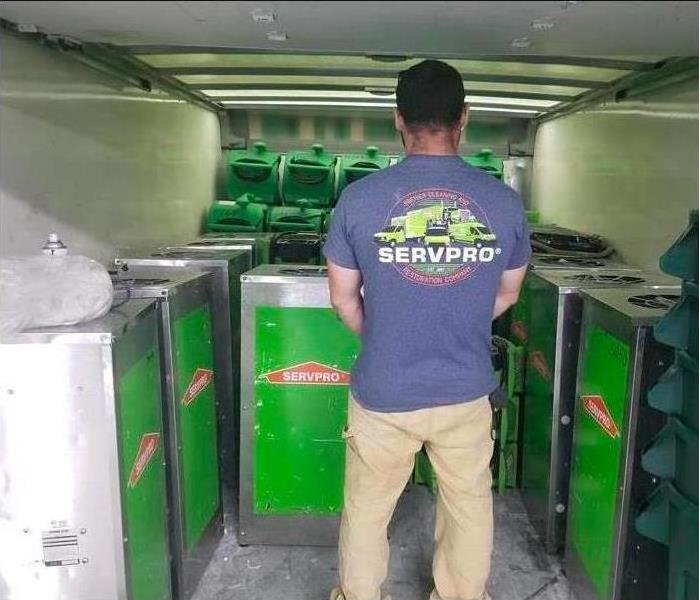3 Damage Mitigation Tips for Commercial Roof Leaks
7/23/2022 (Permalink)
Storm Restoration Process
When you experience a flood, overflowing sinks, or leaky plumbing, your business needs storm and flood damage services — and it needs them fast. Here is what you should do in the aftermath of an emergency situation:
1. Keep an Emergency Plan on File
You should have an emergency plan in place for your business that contains your insurance coverage, emergency contacts and other important documents. That way if you find yourself in an emergency situation, you won't have to scramble to find your preferred storm restoration provider and begin the restoration process
2. Call a Professional
While there are some things you can do on your own, it's best to leave storm response to the professionals. A SERVPRO Franchise Professional in Aventura, FL, can quickly assess the damage and get your business up and running in no time.
The restoration process typically includes:
- An initial assessment
- Water removal
- Drying and dehumidifying
- Cleaning and sanitizing
3. Safely Do What You Can Before a Professional Arrives
Your top priority after an emergency is safety. Electrical hazards should be one of your main concerns. If it is safe to do so, you can perform a few storm restoration tasks, such as:
- Removing antiques, books, art and other valuables from the area
- Mopping up excess water
- Moving furniture from wet carpeting
- Blotting wood furniture
4. Know Your Limits
Exercise common sense as you do what you can to begin the cleanup. Remember that wet materials are heavy, for example. Most household vacuums are not equipped to handle water, so don't attempt to remove water that way.
You can turn on air conditioning in the summer months to aid drying, but don't turn on ceiling fans or light fixtures if the ceiling is wet. Generally speaking, if the area feels unsafe, it's best to leave it to the professionals.
One of the most important aspects of an emergency situation is your quick response. Having a provider that's there for you at any time will help speed up the storm restoration process.






 24/7 Emergency Service
24/7 Emergency Service
